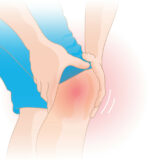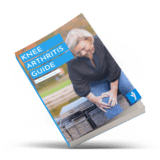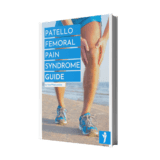Shin splints – diagnosis and rehab

One of the most common overuse injuries in running individuals
Almost every runner will experience some kind of pain in their legs while or after running at some point in ife. While a lot of these complaints will fade away with some proper rest or a better warm-up, there exists a common overuse injury, that requires more attention. You may confuse these symptoms with a normal muscle ache, but if you keep ignoring these symptoms, It could develop into a more serious condition that will have you out of the running game for long. The injury we’re talking about is called “shin splints”. In this blog you will not only learn what it is, how you get it and what the treatment options are, but also how you can easily self-diagnose and treat it by following our video instructions.
What are shin splints?
Shin splints or so-called “Medial Tibial Stress Syndrome” is an inflammation of the tissues along your shin bone and it is caused by excessive exercise or overload. You likely did too much too soon for your body to handle. When having shin  splints, you will feel sharp or dull pain along the inner edge of the shinbone. Similar to the common muscle soreness, the pain appears during or after activity and generally easesafter resting periods. But when you get back to exercising, the pain will show up again. And this is your first sign, that you may not only have a sore calf muscle. So, if your muscle ache doesn’t go away after 1-3 days of rest and comes back every time you exercise, your alarm bells should ring. And for a good reason. When not being cautious and you don’t reduce your activity level, your shin bone gets weaker – because of the inflammation – and the risk of developing a stress fracture is higher. So, we can say that shin splints are warning signs that need to be listened to. Stress fractures make the shinbone unstable and complete rest is required, which prolongs the recovery and the return-to-sport period. These fractures are really small cracks in the bone and are caused by excessive overload during running or jumping, which is why marathon runners are often affected. To differentiate between shin splints and stress fractures MRI is our medium of choice.
splints, you will feel sharp or dull pain along the inner edge of the shinbone. Similar to the common muscle soreness, the pain appears during or after activity and generally easesafter resting periods. But when you get back to exercising, the pain will show up again. And this is your first sign, that you may not only have a sore calf muscle. So, if your muscle ache doesn’t go away after 1-3 days of rest and comes back every time you exercise, your alarm bells should ring. And for a good reason. When not being cautious and you don’t reduce your activity level, your shin bone gets weaker – because of the inflammation – and the risk of developing a stress fracture is higher. So, we can say that shin splints are warning signs that need to be listened to. Stress fractures make the shinbone unstable and complete rest is required, which prolongs the recovery and the return-to-sport period. These fractures are really small cracks in the bone and are caused by excessive overload during running or jumping, which is why marathon runners are often affected. To differentiate between shin splints and stress fractures MRI is our medium of choice.
Who gets shin splints?
As already mentioned before, shin splints are caused by excessive load on your shinbone over a longer period of time. Hence why professionals and athletes like runners, dancers and military personnel are more at risk (4-35%) to develop shin splints. And you may think it affects only advanced athletes, but it actually also happens quite often to beginners. Imagine a person, who has never practiced sports in life, but then over-reaches his own limits by not getting enough rest and running too frequently and far. This long duration, high frequency and lack of rest are the key ingredients to develop an overuse injury when starting to exercise. Because of this, it is strongly advised to start your exercising pathway rather slow and progress step by step. On the other side, also more advanced runners can get shin splints, for example when they prepare for a competition and need to increase their training load or when they restart after a longer break after injury or winter.
But there are also other risk factors we need to consider when talking about shin splints. According to research, the most important ones are a high body mass index (BMI), female gender, weak hip muscles, previous shin splint injuries and excessive foot pronation. Most of these factors are influencing the biomechanics of the hip, knee and ankles, and can so contribute to get shin splints. As an example, a greater foot pronation, so the inward leaning of the ankle while running, puts more load on the shin bone (see Figure 1).

Furthermore, also the way of touching the floor during running plays an important role. Landing on your midfoot or forefoot appears to put less load on your shin, whereas touching the ground first with the heel does the opposite. So, when having shin splints, but also to prevent them, the position of your ankle during running is crucial. To assess the movement of your ankle during running and to find out, if it could be the cause for injuries, a physiotherapist can conduct a running analysis. Read more about the diagnosis of shin splints in the next paragraph.
How to diagnose shin splints?
In the beginning it can get difficult to differentiate between shin splints or just a muscle ache, because the symptoms are quite similar. A quick and easy test can help here, which you can doat home by yourself. This is a common test that physiotherapists perform during the physical examination when suspecting shin splints. For the exact instructions of this test, we made a video for you
So, if you did this test and you felt the exact same pain you feel during or after sports, it’s highly likely that you have shin splints. If you are still unsure, you should consult a physiotherapist for a proper diagnosis and treatment.
But what else will your therapist assess during your visit? The visit will start with a lot of questions. He will first ask you about your activity level, injury history and profession. Also, information on your running distance and frequency are important. Afterwards, it will get more specific and any details of your pain are relevant: since when do you have it, where exactly is it and which movements or exercises trigger it. Then, your therapist will perform a physical examination. The main points he or she will check are signs of inflammation, foot positioning and ankle mobility. As said before, a running analysis can help to identify abnormalities in your running pattern. For that, your running style will be evaluated from different angles and especially the movements of your ankle, hip and knee. If possible, bring your running shoes to the consultation, because they can also give additional information on your running pattern.
How to treat shin splints
Luckily, the chances to get rid of shin splints are good. According to research, almost every athlete has promising results after rest and rehab, without the need of surgery. But from a rehabilitation point of view, there are some key points that you need to keep in mind. Read the following sections to learn more about what you can do about shin splints and check out the exercise video for shin splints
“How can I rehab shin splints?”
When dealing with shin splints, regular physiotherapy is not needed in every case. Actually, research showed that exercise therapy is not better than simple rest. And this is one of the most important things you need to follow. It seems very easy, but for athletes it’s not an easy task, because they don’t want to lose their good shape. And this is a good reason to see a physiotherapist. Your therapist can lead you through the rehabilitation process, give you strengthening exercises for your calves and hips and help you to cope with setbacks. But why should you do exercises if studies showed that rest is a superior to any other treatment options? Well, the average recovery time of shin splints is around 70 days. Imagine not exercising for that long before getting back to running or exercising. Your performance will be bad, your endurance as well and let’s not even mention your strength. With that said, you’ll be at a higher risk to experience shin splints again. And that’s why you should exercise during your rehab as well.
When it comes to exercises, general strengthening of your lower extremity is key. Though, you shouldn’t do any activities that put too much stress on your legs and/or trigger the pain. Otherwise, the inflammation can’t heal properly. To spare load on your shinbone, you can exercise on soft surfaces and wear shoes with inlays for your heel. Ideally, follow an adapted exercise program, where you progressively increase the intensity step by step. We made a video for you with 4 exercises, each one for every phase of the rehab and with progressions:
“What other treatment options do we have?”
Besides enhancing endurance and strength of the lower body, a physiotherapist can increase your ankle mobility with manual therapy, mobilization and stretches. Additionally, if you showed deficits in your running pattern, these can be addressed in the therapy to prevent any further injury and to optimize your running style. After gradually increasing your strength and endurance, and after being pain-free, a graded running program with low impact should be issued. Slowly but steady your physiotherapist will bring you back to your preinjury activity level and give you recommendations for your initial phase after rehab. Common key points may be soft insoles for your heels, increasing your cadence (steps per minute), so you make smaller steps, which decreases the load on your shinbone and a proper warm up program.
Besides that, studies have shown that treatments like ice massage, ultrasound and lower leg braces showed no sufficient benefit. Shockwave therapy (ESWT) was the only therapy option, which showed little pain relief and could shorten the duration of the symptoms. This could be an adjunct to your treatment if available.
Thanks for reading and if you have any comments, let us know below.





